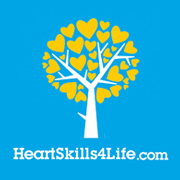Get The

Facts
Pump it up…
- Chest Pain can be a tightness or crushing pain. Pain can come and go or radiate to other areas mainly of upper body.
- Arm, Neck, Back, Jaw pain
- Shortness of breath for no apparent reason.
- Cold Sweat
- Nausea
- Light headed
A change will do you good
The guidelines for CPR/AED changed to simplify life saving skills. ABC is now CAB. If you participated in a CPR class years ago, you may remember Airway, Breathing, Compressions. After further research, Compressions are critical in restarting the heart. So, Compressions, Airway, Breathing is now the gold standard of CPR. Why the change? Time is of the essence when the heart is malfunctioning. Compressions, combined with an Automatic External Defibrillator (AED) increase the chance of survival to over 60% compared with compression only CPR. Too much time checking for a pulse or positioning the head decreased survival rates.
Reluctant to perform?
There are those who are unsure if they would help to save a life due to the exchange of saliva, open wounds, HIV, Hepatitis or fear of being sued. Transmittal of disease during CPR/AED is minimal. The chance of contracting HIV is less than 1%. Wrongful death cases are few and far between as those who help others in need are protected by the Good Samaritan Law. This law was established in 1959 to protect those providing care in “good faith.” This Law was taken from the Bible. Luke 10:25-37 tells the story of the Parable of the Good Samaritan. The law exists in all 50 states and the District of Columbia (to varying degrees).
Learn the skills to save a life!
Automatic External Defibrillator
Automatic External Defibrillators (AED) take the guess work out of life threatening cardiac events. You see them everywhere from airports, malls, schools and even home use. They are portable, easy to use and when used with chest compressions can mean a greater chance of survival.
These devices detect and treat cardiac arrhythmias (Pulseless Ventricular Tachycardia or Ventricular Fibrillation). Since the heart is “electrically active” and the AED delivers a jolt of electricity, this makes the chance of shocking the heart back into a normal rhythm possible. Use of an AED is also covered under the Good Samaritan Law.
*American Heart Association 2013
**Web MD 2013
***See blog. “Broken Heart”





